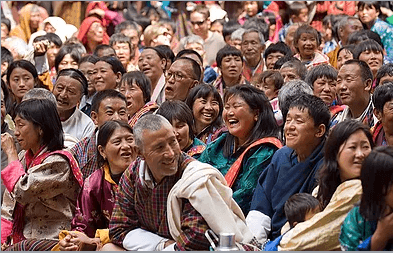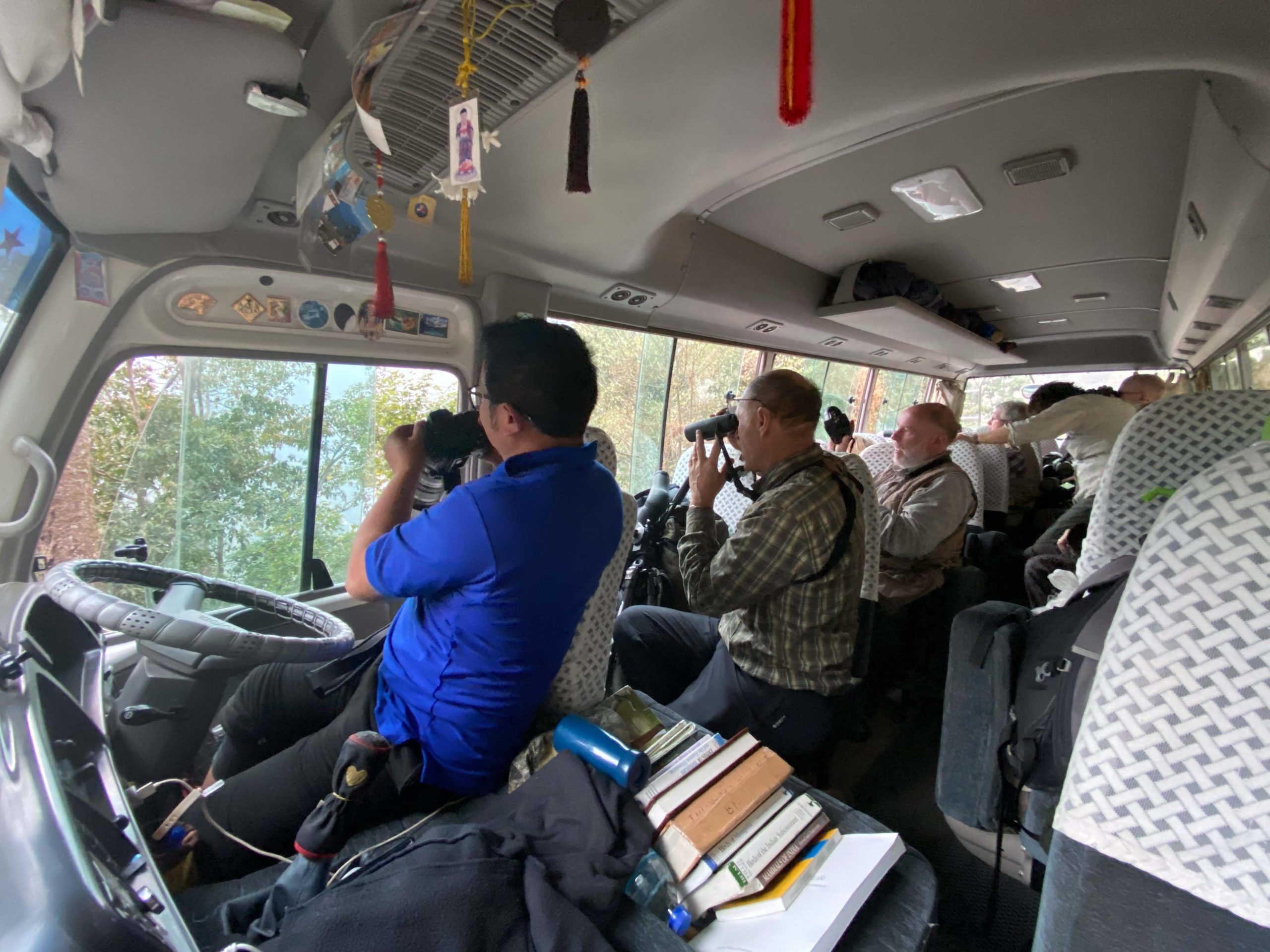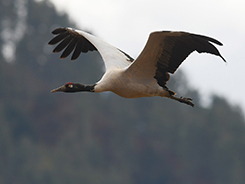7 Days – Short Bird Watching and Cultural Tour in Bhutan



Trip Overview
Description
Bhutan has been protected by its isolation within the Himalayas and its mountainous terrain. The deep valleys and almost impenetrable jungles have acted as allies in preventing destruction of the forests. Today over 70% of the land is forested and 60% is protected with 10 National Parks, together with great variation in altitudes from 150 m to 4,500m, creates an extremely wide range of habitats from undisturbed tropical jungles, through mixed temperate broadleaved forests to high alpine meadows. In this pristine environment where religion states that all life is sacred, wildlife flourishes, making Bhutan one of the top ten bio-diversity hot spots in the world. To date Bhutan has over 780 species of birds and lies within one of the 221 Global Endemic Bird Areas with 28 species of birds endemic to Eastern Himalayas.
Our Spring birding tour will take you through the most amazingly beautiful landscape, full of birding excellence, where we should encounter some 350 species of birds including the country’s star attractions like Himalayan Monal, Satyr Tragopan, Rufous-necked Hornbill, Beautiful Nuthatch and Ward’s Trogon. In addition to the great number of birds, we should also find over 14 species of mammals and amazing variety of butterflies and flowers.
There will also be time to see the amazing architecture, visit dzong’s and meet the friendly Bhutanese people. Overall, experience the unique culture of Bhutan, expanding your interests but not compromising your main objectives!
| Number of Guests | Price Per Guest |
|---|---|
| 1 | US $ 4,600 |
| 2 | US $ 4,480 |
| 3-12 | Twin sharing cost: US $ 4,360 |
Single Occupancy (Optional) – US $300
Flights are not included in the tour cost.
Brief Itinerary
This morning you take the Drukair/Bhutan Airlines flight to Paro, where you should have good views of the Himalayas, including many of the highest mountains in the world. After clearing customs and immigration, you will be met by your guide from Langur Eco Travels.
Next we will stop by the Pa Chhu river, where camouflaged amongst the glacial stones, Himalayan riverine species such as the Ibisbill can be seen as it dips in the snowmelt, searching for food. In this area we should also find; the fairly common Brown Dipper, Common Snipe (rare), Common Hoopoe, Himalayan Buzzard, Common Kestrel, Grey-backed Shrike, Plumbeous Water Redstart, Russet Sparrow, Blue Whistling Thrush (commonly seen on most days), Hodgson’s Redstart, Rosy Pipit, Siberian Stonechat, Citrine Wagtail (rare), Rufous-breasted Accentor and the amazing Wallcreeper.
Northward migration will be underway and many of the valleys throughout Bhutan act as important conduits, therefore, it is possible that you may see species as yet not recorded in Bhutan.
Overnight: Hotel Olathang or upgrade as required, Paro, 2300m. (Meals: B, L, D).
An early morning departure for our journey up through ancient high boreal forests to Chele La at 3,780m, the highest point we will reach on this tour. Along this route we can look out for Grey Nightjar, often seen on the roadside at dawn. Arriving at the pass there are breathtaking views of the high Himalayan peaks of Jhomolhari (7,219m), Jichu Drake (6,989m) and down into the Paro and Ha valleys.
Birds we may see include the colourful, Himalayan Monal, Blood Pheasant, Long-legged Buzzard (rare), Himalayan Cuckoo, Wood Snipe (very rare), Rufous-fronted Tit, Greenish Warbler, Red-tailed Minla, Hodgson’s Treecreeper, Dusky Thrush, Blanford’s Rosefinch, Collared Grosbeak, White-throated Redstart, White-browed Bush Robin, Alpine Accentor, and Plain Mountain Finch to name a few amongst many regular species.
After breakfast we will continue birding the beautiful areas of Chele La before gradually making our way back to Paro for an overnight.
Overnight: Hotel Olathang or upgrade as required, Paro, 2300m. (Meals: B, L, D).
This morning we will take the 25 minutes flight to Bumthang; from your flight there are breathtaking views of Himalayan Mountains. Bumthang is the religious heartland of Bhutan and there are many ancient cultural and religious sites dating as far back as the 7th century. Although our main objective is birding, we will have time to explore the main town of Jakar. Common birds in the area include, Red-billed Chough, Black-billed Magpie (endemic to Bumthang region in Bhutan), Large-billed Crow and Eurasian Tree Sparrow.
Next, we will drive along Selthang La (3,600m), with clement weather; there are spectacular views of Mt. Gangkar Puensum at 7,315m, the world’s highest unclimbed peak. All around are stunning landscapes of the High Himalayas, auspiciously placed prayer flags, typical Bhutanese villages and spectacular temples – truly a magical land! Species we may encounter along this section include the brilliant Spotted Laughingthrush, Rusty-flanked Treecreeper, Chestnut-headed Tesia, Long-tailed Minivet, Dark-rumped Rosefinch and Brown Bullfinch. Other regular birds include White-winged Grosbeak, White-browed Fulvetta, Coal, Grey-crested and Rufous-vented Tits.
Overnight: Kailas Guesthouse or upgrade as required, Bumthang, 2,700m. (Meals: B, L, D).
Leaving Bumthang valley we climb through forests of larch, silver fir, spruce and towering hemlocks, until Thrumshing La (pass) at 3,780m, here we will begin to explore this magnificent forests road where we will be looking for some of Bhutan’s highly prized birds such as the spectacular Satyr Tragopan a species that often provide us with close lengthy views, our second opportunity to see the stunning Blood Pheasants, often seen feeding by the road side in flocks, Great Parrotbill, the amazing Slender-billed Scimitar Babbler another mega bird for Bhutan and the uncommon Speckled Wood Pigeon.
From the pass we drive down to the nomadic village of Sengor and continue to Yongkola, stopping for birds such as Yellow-billed Blue Magpie, Rufous-breasted Bush Robin (uncommon in this area but rare elsewhere in the world), Rufous-vented Yuhina, Large-billed Leaf Warbler, Bar-throated Siva (previously known as Chestnut-tailed Minla), Rufous Sibia (very common through out Bhutan), Grey-chinned Minivet, Grey-sided Bush Warbler, Hoary-throated Barwing (fairly common in this area but range restricted to Eastern Himalayas), and at Namling near a roadside cliff we will look for a pair of Yellow-rumped Honeyguide (near threatened) installed near nests of Giant Rock Bee that hang from a cliff.
Overnight: Trogon Villa, Yongkola, 1,800m. (Meals: B, L, D).
The areas of Yongkola, Namling, Tshamang and Lingmethang are considered to be one of the finest birding locations in the world.
We have three full days to explore the pristine forests of Thrumshing La national park using a paved yet rarely used road and it is in this birding hotspot that we look for some of Bhutan’s most sought-after birds such as, Chestnut-breasted Partridge (globally vulnerable), the mega Rufous-necked Hornbill (widely distributed in Bhutan but rare elsewhere in the world), Steppe Eagle (globally endangered), Bay and Crimson-breasted Woodpeckers, Long-tailed Broadbill, Blue-naped Pitta (rare), the amazing Yellow-throated and Golden-breasted Fulvettas, the weird looking Sikkim Wedge-billed Babbler (there are only two known sites for this rare bird in Bhutan), Long-billed and Rufous-throated Wren Babblers (both of which are very rare in the world), Himalayan Cutia (another top bird), Himalayan Bluetail, Spotted Elachura (formally known as Spotted Wren Babbler), Broad-billed and Chestnut-crowned Warblers, Black-headed Shrike-babbler (Namling valley is the only known site for this species in Bhutan), Nepal House Martin (big nests on a overhanging cliff near Namling waterfall), Black Bulbul, Scaly and Bhutan Laughingthrushes, Orange-bellied Leafbird, Yellow-bellied fantail, Lesser Shortwing, Slaty-bellied Tesia, Mountain Tailorbird, White-gorgeted and Little Pied Flycatchers.
After birding in the upper region of Yongkola, we have time to explore the wonderfully rich, warm broad-leafed forests of Lingmethang road where we hope to find, Rufous-bellied Eagle (another near-threatened species), Beautiful Nuthatch (globally vulnerable and a top target for Bhutan), White-naped Yuhina (undoubtedly the most beautiful yuhinas in Bhutan), Coral-billed Scimitar Babbler often seen together in mixed feeding flocks with Rusty-fronted Barwing, and Greater Rufous-headed (White-breasted) Parrotbill, the amazing Sultan Tit, the stunning looking Blue-bearded Bee-eater, and Blue-winged Laughingthrush (perhaps the most secretive laughingthrushes in Bhutan).
Other regular species in the area include, Mountain Hawk and Black Eagles, Barred Cuckoo Dove, Collared Owlet, Speckled Piculet, Black-throated Sunbird, Streaked Spiderhunter, Chestnut-winged, Asian Emerald and Grey-bellied Cuckoos, Grey-headed and Grey-capped Pygmy Woodpeckers, Red-faced Liocichla (very colourful), Rufous-chinned, White-crested and Rufous-necked Laughingthrushes, Golden-throated and Blue-throated Barbets, Maroon Oriole, Lesser Racket-tailed Drongo, White-throated Fantail, Grey Treepie, Grey-bellied Tesia, Striated Prinia, Rufous-capped, Grey-throated and Golden Babblers, Mountain and Striated Bulbuls, White-bellied Erpornis, Rufous-bellied Niltava, Orange-headed Thrush, Rusty-cheeked Scimitar Babbler, the handsome Blue-capped Rock Thrush, Common Rosefinch (on Tshamang road), Grey-cheeked and Black-faced Warblers, Dark-sided, Pale Blue and Sapphire Flycatchers.
On one evening, we will take a short night drive hoping to find Bhutan Giant Flying Squirrel (which has been regularly seen on our birding tours to Yongkola), Owls and frogmouth we will look for include Hodgson’s Frogmouth (Yongkola is the only known regular site for this species in Bhutan), Brown Wood Owl (rare), and the common but difficult to find Mountain Scops Owl.
Overnight: Trogon Villa, Yongkola, 1800m. (Meals: B, L, D).
This morning we will bird along the cool broad-leafed forests of Namling region, here we can look for the rare altitudinal migrant species Gould’s Shortwing (mega species for Bhutan), the beautifully plumaged Rufous-breasted Bush Robin, Black-eared Shrike Babbler, Himalayan Bluetail, Green-tailed and Gould’s Sunbirds, Chestnut-bellied Rock Thrush, and Black-throated Parrotbill amongst many other regular birds.
After breakfast we will continue our birding along Sengor valley, looking for special birds from this higher mid temperate forest, such as the attractive Fire-tailed Myzornis, Fire-tailed Sunbird (perhaps the most special sunbirds in the world), the secretive and rarely seen Bar-winged Wren Babbler, Tickell’s Thrush and another opportunity to see the rare Satyr Tragopan.
From Sengor we will drive up to the high pass of Thrumshing La at 3,780m, stopping en-route to locate the scarce Fulvous Parrotbill, the shy Eurasian Woodcock, Black-throated Thrush, and Stripe-throated Yuhina.
From the pass we descend through forests of towering hemlock, spruce, silver fir and larch which provides us with further opportunities for Himalayan Monal, flocks of Blood Pheasants, as well as regular species like Winter Wren, Goldcrest, Whistler’s Warbler, Spotted Nutcracker, White-collared Blackbird, Little Bunting and perhaps the rarely seen Robin Accentor,
Our final journey for today takes us through the picturesque village of Ura and descend to Bumthang valley where we overnight.
Overnight: Kailas Guesthouse or upgrade as required, Bumthang, 2,800m. (Meals: B, L, D).
This morning we make an early start to be at Tharpaling Monastery in the early hours as we hope to witness the monks feeding Himalayan Monals, which have become accustomed to this practice.
Other species we will look in the area include Snow Pigeon, Black-faced Laughingthrush, White-bellied Redstart (rare but amazingly beautiful), small flocks of Alpine Accentor, Himalayan Beautiful Rosefinch, and with a bit of luck we should see the rare vagrant Godlewski Bunting.
After breakfast we will descend to Gattsa valley and continue to Yotong La (3450m) for some high altitude birds such as Red-throated Thrush, Ultramarine Flycatcher, White-winged Grosbeak, Red-headed Bullfinch, Hume’s Bush Warbler, Tickell’s Leaf Warbler, Whiskered Yuhina, Rufous-winged Fulvetta, Red Crossbill, and Himalayan White-browed Rosefinch.
Arriving in Trongsa we have the option to visit the historic Trongsa Dzong (fortress) built in 1637, and the Ta Dzong or Watch Tower, which is now the National Museum.
Overnight: Yangkhil Resort, Trongsa, 2,000m. (Meals: B, L, D).
Another early start as we drive to Bje Zam for our first birding stop, here we hope to see, Bonelli’s Eagle (rare), Black-tailed Crake (at a roadside marsh), the stunning Spotted Forktail, the noisy Great Barbet, Large Hawk Cuckoo, Greater Yellownape, Large Niltava, Verditer Flycatcher, White-capped Water Redstart (found near many of the roadside streams and waterfalls), Fire-breasted Flowerpecker, Striated and White-throated Laughingthrushes, White-tailed Nuthatch, White Wagtail (common), Olive-backed Pipit (fairly common), Yellow-breasted Greenfinch, Gold-naped Finch, Russet Bush Warbler, Buff Barred and Blyth’s Leaf Warblers, Green-backed Tit, and Tibetan Siskin.
After a hot picnic breakfast, the road takes us through the village of Chendibji, where a Nepalese styled Chorten is picturesquely situated alongside the river. After looking for birds like Crested Kingfisher and Solitary Snipe (rare), we will continue our drive to Phobjikha, over the pass of Pele La, where Himalayan Vulture, and Lammergeier (Bearded Vulture) may be seen.
From Pele La we will descend into Phobjikha valley stopping at Gangtey to visit the largest Nyingmapa monastery in Bhutan, set on a spur above the Phobjikha valley and surrounded by the quaint village of Gangtey.
We stay overnight in the Phobjikha, considered to be one of the most beautiful valleys in Bhutan. Phobjikha is also the wintering ground of the rare and little-known Black-necked Crane (globally vulnerable), driven off the vast open plateau of Tibet by the ferocity of its high altitude winter, the cranes find refuge here from November until March.
Also within the valley we can look for the areas specialties like, Oriental Skylark (fairly common but rare elsewhere in Bhutan), Hen Harrier (at least a pair), Upland Buzzard, and Lammergeier (also known as Bearded Vulture).
Overnight: Gakiling guesthouse or upgrade as required, Phobjikha, 2,800m. (Meals: B, L, D).
Today we take the winding mountain road up through oak and rhododendron forests, festooned with lichens towards Lawa La at 3,350m before dropping down to Nobding valley for our first stop area for birding. In these diverse habitats we have the opportunity to find and locate one of the top targets for Bhutan the Ward’s Trogon (a montane species who’s range is restricted to Eastern Himalayas), Rufous-bellied Woodpecker, Hodgson’s Hawk Cuckoo, the strange and elusive Long-billed Thrush, the beautifully coloured Chestnut-crowned Laughingthrush, dazzling Scarlet Minivet, Yellow-cheeked Tit, Small Niltava (view of a glowing male is not to be missed), Pygmy Blue Flycatcher, Fire-capped Tit, Wedge-tailed Green Pigeon, Lesser Yellownape, Blue-winged Minla, Asian Barred Owlet, Red-billed Leiothrix and White-browed Shrike Babbler.
After having breakfast in Nobding area, we will continue to the warmer valley of Punakha stopping along the Puna Tshang Chhu (river) valley for some water birds, where we hope to see, Pallas Fish Eagle (another globally endangered species), Osprey, Bar-headed Geese, Ruddy Shelduck (abundant during winter months), Gadwall, Eurasian Wigeon, Mallard, Indian Spot-billed Duck (rare), Northern Shoveler (rare), Tufted Duck (rare), Great-crested Grebe (rare), Goosander, Grey Heron, Little Egret, Great Cormorant (common), River and Red-wattled Lapwings, Long-billed and Little Ringed Plovers, Common Greenshank, Green and Common Sandpipers, Pallas’s Gull (rare), Spotted Dove, Long-tailed Shrike, White-throated and Common Kingfishers, Oriental White-eye, Scaly-breasted Munia, White-browed and White Wagtails, Richard’s Pipit (in the nearby paddy fields), Oriental Magpie Robin (abundant), Common Myna (abundant) and the localized Slender-billed Oriole.
Overnight: Meri Puensum Resort or upgrade as required, Punakha, 1,300m. (Meals: B, L, D).
This morning we will take a cultural break to visit the majestic Punakha Dzong built in 1637, and situated on a promontory at the confluence of the Mo (mother) and Pho (father) Chhu (river), Punakha Dzong is known as the “Palace of Great Happiness” and considered to be one of the most beautiful Dzongs in Bhutan.
Continuing our journey through the terraced fields at Lobesa we reach in the mixed broad-leafed forest of Menchuna where we will take a short off-road trial for birding, here we can look for species such as Kalij Pheasant, Besra, Northern Goshawk, Scaly (White’s) Thrush, Short-billed Minivet, Ashy Drongo, Eurasian Jay, Black-throated Tit, Pygmy Wren Babbler (Cupwing), Brown-throated Treecreeper, Slaty Blue Flycatcher, and the beautiful Golden Bush Robin.
After picnic lunch at a beautiful setting, we will proceed to Lampelri Botanical Park for another short walk, searching for, Hill Partridge, Darjeeling Woodpecker, Ashy-throated Warbler, Streak-breasted Scimitar Babbler, Green Shrike Babbler, Brown Parrotbill, Alpine Thrush, a species that is recently split from Plain-backed Thrush, Grey-winged Blackbird, Blue-fronted Redstart, Yellow-browed Tit, Rufous-gorgeted Flycatcher, White-browed Shortwing, Maroon-backed Accentor (another rare bird), Dark-breasted Rosefinch and perhaps the rare and shy Blue-fronted Robin.
Our next stop is at Dochu La, an awe-inspiring sight, where colourful prayer flags and 108 glistening white chortens welcome us. Once again on clear days there are magnificent views across the high Himalayan Mountains.
Arriving in Paro we will enjoy a celebratory farewell dinner to mark the end of our tour.
Overnight: Hotel Olathang or upgrade as required, Paro, 2,300m. (Meals: B, L, D).
After breakfast we will drive to Paro airport and fly to Delhi, Kolkata, Kathmandu or Bangkok for your onward connections. (Meals: B & L).







